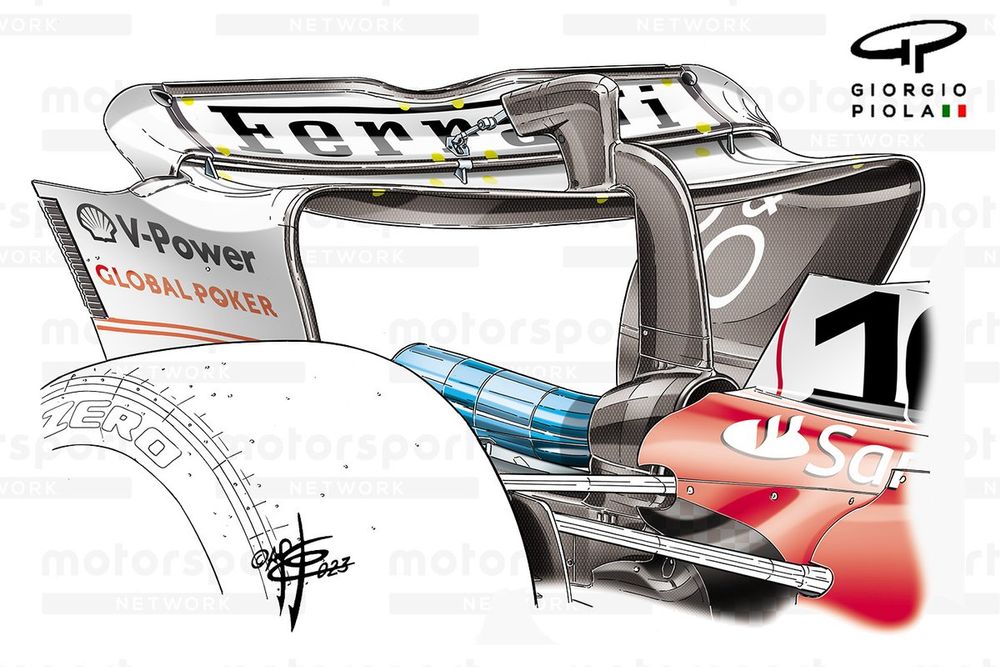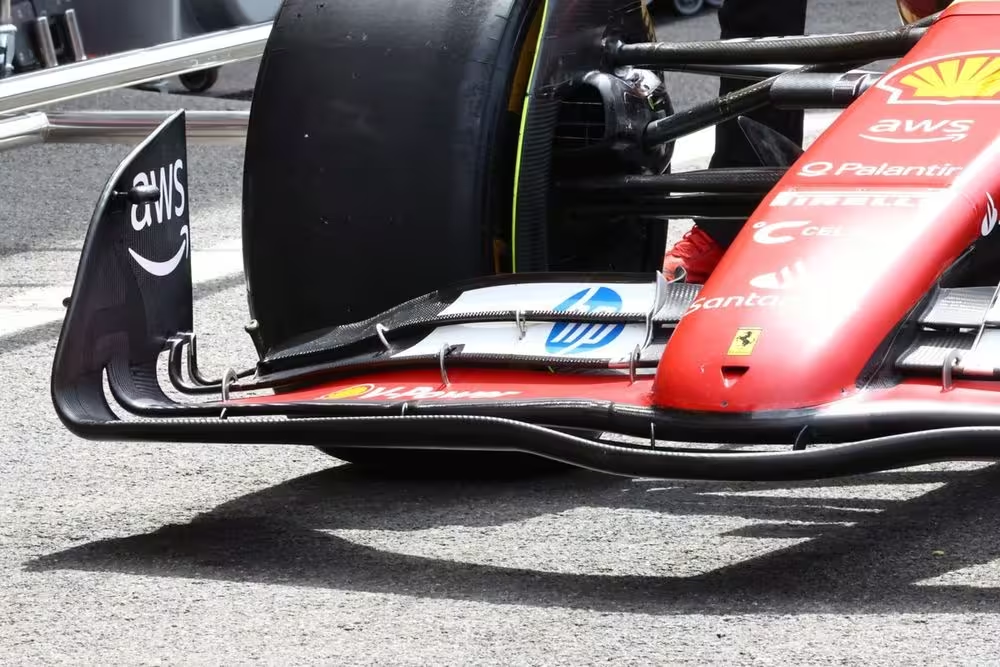Several Formula 1 teams have new front and rear wing specifications at their disposal this weekend, as they look for ways to overcome the challenges posed by the Spa-Francorchamps circuit.
The changes are aimed at depowering the wings, compared to those used elsewhere, in a bid to help reduce downforce and drag – which are useful for the first and third sectors around the track.
However, teams cannot go totally extreme with what they bring as they still have to be mindful about the demands of the twisty second sector.
Alterations made to the front wing mostly revolve around the upper elements being trimmed across their trailing edge to accommodate and balance the choices being made at the rear of the car.
In particular, Ferrari noted in the car presentation document that it has several options at its disposal, so that it can make a more informed decision during Friday’s running.
Ferrari SF-24 technical detail
Photo by: Giorgio Piola
Changes made at the rear of the car are always more obvious, as teams reduce the size of the elements that are allowed within the rear wing’s box region. They also try to tailor some of the wing’s more intricate design aspects in order to reduce downforce and drag.
There’s also the beam wing to consider when choosing these specifications, with some teams opting to introduce more offloaded variants. Some will select something from the pool of parts they have already established this season and which offer the best interaction with their rear wing choices.
Ferrari’s new rear wing design is a callback in many ways to the design used at Spa last season (below), with a similar mainplane and top flap employed in order to find the right level of downforce. Its semi-circular trailing edge notch also returns.

Charles Leclerc, Ferrari SF-23 rear wing detail
Photo by: Giorgio Piola
Comparably though, we can see how Ferrari has shifted its design philosophy when it comes to the tip section’s connection to the endplate.
The rolled-over inboard mounting used last season rarely featured thereafter, whilst its solution used on other downforce level wings already this season (see main image) follows in the footsteps of its rivals, with the lower edge of the tip section exposed to the airflow.
McLaren’s new rear wing specification also follows a similar trend, as it features the semi-circular notch in the centre of the upper flap’s trailing edge.
However, it has utilised a…
Click Here to Read the Full Original Article at Motorsport.com – Formula 1 – Stories…

